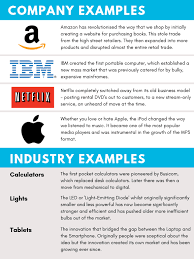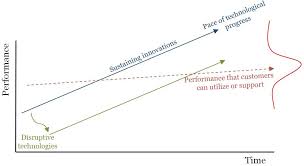The Concept of Disruptive Innovation by Christensen
Clayton Christensen, a renowned scholar and business consultant, introduced the concept of disruptive innovation in his seminal work. Disruptive innovation refers to the process by which a new product or service enters the market and eventually disrupts the existing market and displaces established competitors.
Christensen argued that disruptive innovations often start by targeting overlooked or underserved segments of the market with simpler, more affordable solutions. These innovations may initially be seen as inferior to existing products or services but gradually improve and gain traction, eventually outperforming traditional offerings.
One key aspect of disruptive innovation is its potential to create new markets or significantly alter existing ones. By challenging the status quo and redefining industry norms, disruptive innovations can lead to substantial changes in consumer behaviour and preferences.
Moreover, Christensen highlighted that established companies are often at risk of overlooking disruptive threats due to their focus on sustaining innovations that cater to existing customers’ demands. This tunnel vision can leave them vulnerable to being blindsided by disruptive newcomers who target alternative customer needs.
In conclusion, Clayton Christensen’s theory of disruptive innovation has had a profound impact on how businesses understand and respond to market dynamics. By recognising the potential for disruption and embracing change, companies can position themselves for long-term success in an ever-evolving business landscape.
9 Essential Tips for Embracing Disruptive Innovation in Your Organisation
- Focus on creating products or services that target underserved or new market segments.
- Be prepared to cannibalize your existing products or services to embrace disruptive innovations.
- Encourage a culture of experimentation and risk-taking within your organisation.
- Keep an eye on emerging technologies and trends that could disrupt your industry.
- Stay close to your customers to understand their evolving needs and preferences.
- Iterate quickly and be willing to adapt based on feedback from early adopters.
- Build flexible and agile teams that can respond swiftly to changes in the market landscape.
- Invest in continuous learning and development for employees to foster innovation capabilities.
- Collaborate with external partners, startups, or research institutions to access new ideas and expertise.
Focus on creating products or services that target underserved or new market segments.
To leverage Clayton Christensen’s concept of disruptive innovation effectively, businesses should concentrate on developing products or services that cater to underserved or emerging market segments. By identifying unmet needs or overlooked customer groups, companies can introduce innovative solutions that have the potential to disrupt existing markets and gain a competitive edge. This strategic focus not only allows businesses to differentiate themselves from established competitors but also opens up new opportunities for growth and market expansion. Embracing this approach can lead to the creation of transformative offerings that resonate with customers and drive sustainable success in dynamic business environments.
Be prepared to cannibalize your existing products or services to embrace disruptive innovations.
In the realm of Clayton Christensen’s disruptive innovation theory, a crucial tip emerges: be prepared to cannibalize your existing products or services in order to fully embrace disruptive innovations. This strategic approach involves the willingness to let go of established offerings that may become obsolete in the face of emerging disruptive technologies or business models. By proactively cannibalizing their own products or services, companies can stay ahead of the curve, adapt to changing market dynamics, and position themselves as leaders in driving innovation rather than being overtaken by it.
Encourage a culture of experimentation and risk-taking within your organisation.
To effectively leverage Christensen’s concept of disruptive innovation, it is crucial to foster a culture of experimentation and risk-taking within your organisation. By encouraging employees to explore new ideas, test innovative solutions, and take calculated risks, you create an environment that is conducive to identifying and capitalising on disruptive opportunities. Embracing a culture that values experimentation not only promotes creativity and out-of-the-box thinking but also empowers individuals to challenge the status quo and drive meaningful change. In doing so, organisations can adapt more readily to market shifts, stay ahead of competitors, and ultimately thrive in an era defined by rapid technological advancements and evolving consumer preferences.
Keep an eye on emerging technologies and trends that could disrupt your industry.
It is crucial for businesses to stay vigilant and attentive to emerging technologies and trends that have the potential to disrupt their industry, as highlighted by Christensen’s theory of disruptive innovation. By keeping an eye on these developments, companies can proactively adapt their strategies, products, and services to stay ahead of the curve and remain competitive in a rapidly evolving market landscape. Embracing change and being prepared to innovate in response to disruptive forces can help businesses not only survive but thrive in the face of technological advancements and shifting consumer preferences.
Stay close to your customers to understand their evolving needs and preferences.
To effectively navigate the realm of disruptive innovation as outlined by Clayton Christensen, it is imperative for businesses to maintain proximity to their customers. By staying attuned to the evolving needs and preferences of their customer base, companies can gain valuable insights that inform strategic decisions and product development. This customer-centric approach not only fosters a deeper understanding of market dynamics but also enables organisations to proactively adapt to changing trends and seize opportunities for innovation. Embracing this principle allows businesses to cultivate long-lasting relationships with their customers while remaining agile in the face of disruptive forces in the market.
Iterate quickly and be willing to adapt based on feedback from early adopters.
In the realm of Clayton Christensen’s disruptive innovation theory, a crucial tip is to iterate rapidly and demonstrate a willingness to adapt in response to feedback from early adopters. By engaging with this iterative process, businesses can refine their offerings swiftly, address emerging challenges, and align their products or services more effectively with the evolving needs of their target audience. This proactive approach not only fosters continuous improvement but also enhances the chances of success in navigating the competitive landscape shaped by disruptive forces.
Build flexible and agile teams that can respond swiftly to changes in the market landscape.
In the realm of Christensen’s disruptive innovation theory, a crucial tip is to construct teams that embody flexibility and agility, enabling them to swiftly adapt to shifts in the market landscape. By fostering a culture of responsiveness and nimbleness within teams, organisations can effectively navigate disruptive forces and capitalise on emerging opportunities. Embracing change and empowering teams to proactively adjust strategies in line with evolving market dynamics can enhance resilience and competitiveness in an environment where adaptability is key to sustained success.
Invest in continuous learning and development for employees to foster innovation capabilities.
Investing in continuous learning and development for employees is a crucial strategy to cultivate innovation capabilities within an organisation, especially in the context of Christensen’s theory of disruptive innovation. By providing opportunities for ongoing education and skill enhancement, companies can empower their workforce to stay abreast of emerging trends, technologies, and market dynamics. This not only enhances employees’ creativity and problem-solving skills but also encourages a culture of experimentation and adaptation. Ultimately, fostering a learning environment can enable employees to contribute fresh ideas, explore new approaches, and drive innovation that aligns with the principles of disruptive innovation advocated by Clayton Christensen.
Collaborate with external partners, startups, or research institutions to access new ideas and expertise.
To leverage the principles of Christensen’s disruptive innovation effectively, it is crucial for businesses to foster collaboration with external partners, startups, or research institutions. By engaging with these external entities, organisations can tap into a diverse pool of ideas and expertise that may spark innovative solutions and opportunities for disruption. Collaborating with external partners allows companies to gain fresh perspectives, access cutting-edge technologies, and stay ahead of industry trends. This strategic approach not only enhances the organisation’s capacity for innovation but also strengthens its competitive position in a rapidly evolving market landscape.




